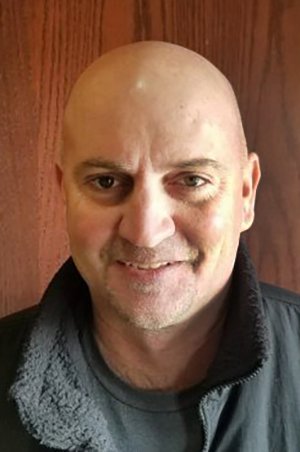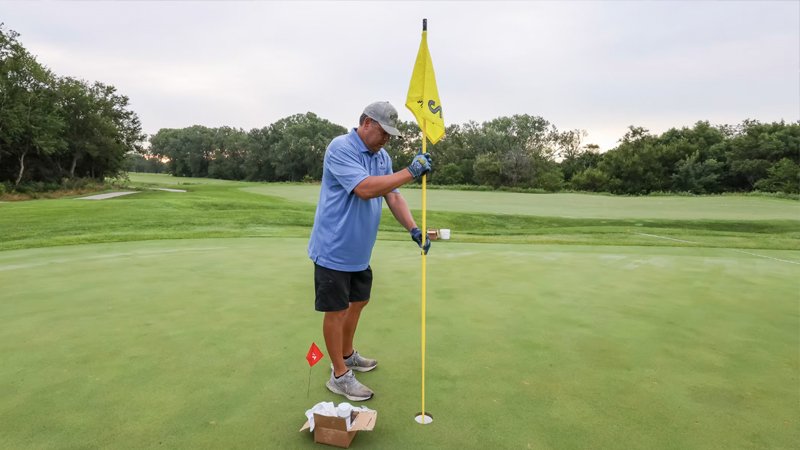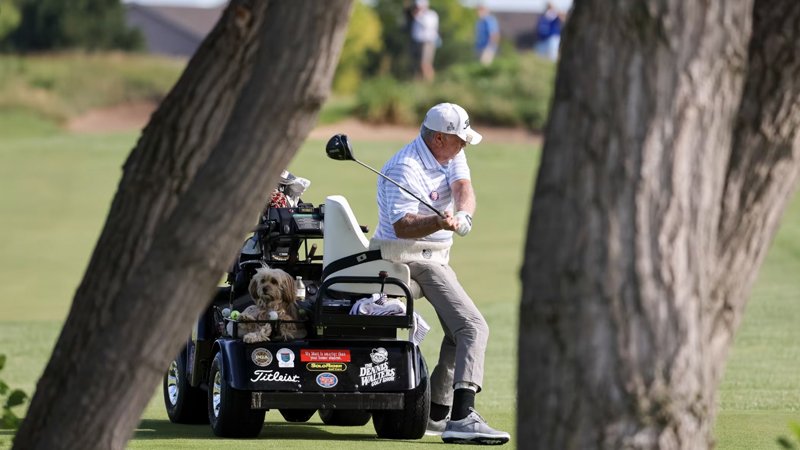James Houchen knew that bringing the U.S. Adaptive Open to Kansas would be an uplifting event, but even he was not prepared for the truly profound effect the USGA event would have on him and his community.
 "It's definitely the top event I've been involved with, hands down, times 10," said Houchen, superintendent at Sand Creek Station Golf Course in Newton, Kansas. "It was a lot of work, but it was a real pleasure because of what we were doing it for. It made you feel wonderful."
"It's definitely the top event I've been involved with, hands down, times 10," said Houchen, superintendent at Sand Creek Station Golf Course in Newton, Kansas. "It was a lot of work, but it was a real pleasure because of what we were doing it for. It made you feel wonderful."
That is no small claim from Houchen (at right), the grow-in superintendent at nearly 20-year-old Sand Creek Station. A 2006 Jeff Brauer design, Sand Creek Station was the site of the final U.S. Amateur Public Links Championship in 2014.
"You think you have it bad," he said. "Then you watch them play."
In its third year, the Adaptive Open was held on Pinehurst No. 6 in 2022 and '23 before coming to Sand Creek Station July 8-10. Houchen and Sand Creek Station general manager Dustin Housh attended last year's event in North Carolina to learn whether the tournament was something they might be interested in bringing to Kansas.

"We approached the USGA about bringing it here," Houchen said. "We had been looking for something different."
With the tournament continuing through different sites, next year's event will move on to Woodmont Country Club in Rockville, Maryland.
The championship in Kansas had 96 players — 73 men and 23 women — in flights in 15 categories: intellectual impairment (M-W), lower limb impairment (M-W), multiple limb amputee (M-W), neurological impairment (M-W), seated players (M-W), upper limb impairment (M-W), vision impairment (M-W) and short stature (M).
Accommodating the 73 men and 23 women in the tournament with so many unique challenges required a great deal of work from Houchen, his team and the many volunteers who helped throughout the event.
Among the preparations made in advance of the tournament included some tree work to help open the course and maintaining rough height at 2.5 inches.
It's definitely the top event I've been involved with, hands down, times 10. It was a lot of work, but it was a real pleasure because of what we were doing it for. It made you feel wonderful.
Making the course fair but challenging for the players requires steps one might not necessarily consider in the day-to-day operations of a golf course.
Sand Creek Station stretches out to about 7,500 yards from the back tees, but played from 3,800 to 6,500 for the adaptive tournament.
Squeezing the course to 3,800 required adding new teeing areas. Houchen achieved that by mowing some areas down to tee box height — about 0.75 inches — and building temporary tees into the fairways.
Other adjustments incorporated rounding off the edges of some of the bunkers, creating easier entry and exit points, and marking others as ground under repair for the seated flights.
"A few things we learned, you have to be mindful of things you don't always think about," Houchen said. "Steep slopes had to be marked off with signs and ropes.
"We had to make sure everything was safe, like fixing cracks in concrete cart paths."
Green speeds were maintained at about 10.5 feet on the Stimpmeter. Since seated golfers are permitted to drive adaptive golf cars — both three- and four-wheel varieties — onto the putting surfaces. USGA staff monitored the effects of the cart traffic on greens using the G3 smart ball. Mostly, the USGA — and Houchens — is interested in conditions that can cause variations in green speed attributed to cart traffic. Houchens was still awaiting the USGA's findings.

"The USGA runs this just like they do any other tournament," Houchens said.
"However, we can't have conditions like you see on TV. We couldn't have greens too fast, and there were no crazy hole locations."
About 200 volunteers worked the event throughout the week at jobs such as parking, scoring, guest services and serving as forecaddies. Many also helped with course maintenance.
"The community really turned out to support this event," Houchens said. "We had five or six volunteers every day. They weren't the same ones every day. We had other superintendents, sales reps and vendors."
Although next year's tournament will be played 1,200 miles away in Maryland, providing an outlet for one of golf's most underserved groups has left a lasting imprint at Sand Creek Station.
The course is planning to work with the Central Links Golf Association, headquartered in Lenexa, Kansas, on creating and hosting similar events in the future.
"It was an honor for the USGA to select us to host this event," Houchen said. "I can't say enough about how inspiring the players were.
"Hopefully, we can work with the Central Golf Links Association to get another one like it."

